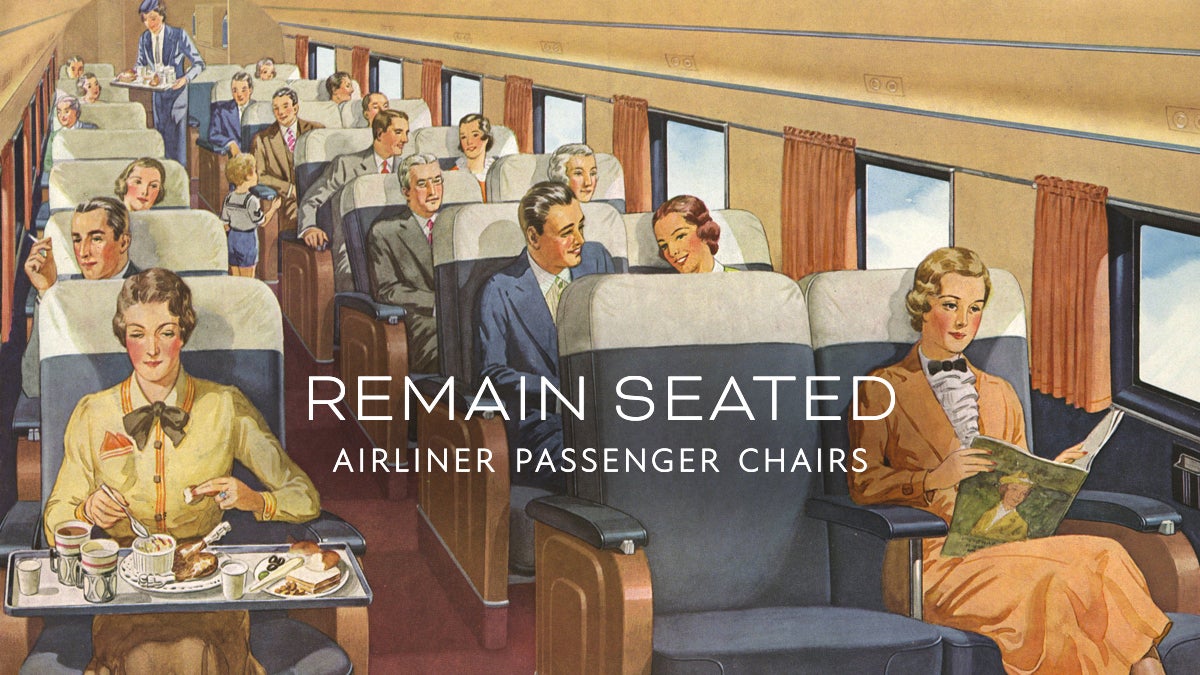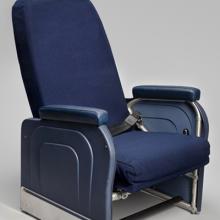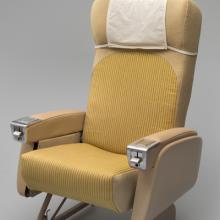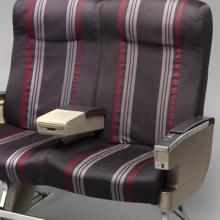Remain Seated Airliner Passenger Chairs

International Terminal
Remain Seated: Airliner Passenger Chairs
Of all the equipment in a commercial airliner, the passenger seat—where one spends nearly an entire flight— is among those items most closely associated with the air travel experience. However, for most U.S. airlines of the late 1920s and early 1930s, passenger accommodations were considered secondary to more profitable airmail contracts. Airliner cabins were generally designed for mail and freight, not for passenger comfort. Seating was intended for cramped quarters, and scaled-down chairs were constructed of lightweight, inexpensive materials such as wicker, with minimal padding to reduce loads. As aeronautics progressed in the 1930s and 40s, and larger airliners with greater range were introduced, airlines turned their focus to passenger service and comfort. As flight times increased, passengers could spend many hours seated in the cabin. Manufacturers and carriers began to study cabin contentment as they carefully considered the design of their passenger chairs. Seating, as well as berthing (sleeping) accommodations, became a major selling point for competing airlines to attract customers.
During the postwar era, airlines introduced seating innovations as they launched larger, more advanced, long-range propliners. Many carriers also divided fares into two distinct classes of service. First class included the airline’s best, most comfortable and relaxing seats with more room and luxurious cabin refinements. Coach or tourist class entailed fewer amenities with closely arranged, less comfortable seats designed more for function and filling the cabin with greater numbers of passengers. With the introduction of long-range turbojet airliners in the late 1950s, airlines upgraded their seats for comfort during extended travel while bringing quieter, vibration-free flight to airliner cabins. After the introduction of the short-to-midrange Boeing 727 in 1964, and the Boeing 737 and Douglas DC-9 shortly after, many airlines highlighted their fast, reliable, and economical service to more locations with less emphasis on passenger comfort, particularly with coach services.
With the launch of the widebody airliners in the 1970s, major carriers delivered long-haul, multi-class luxury with an inspired vigor, offering spacious cabins reminiscent of living rooms and plush, multifunctional seats evocative of easy chairs. This exhibition chronicles airline passenger seating from its modest wicker origins, through the era of the propliner when comfort emerged as an important selling point, to the jet age when passenger seating studies led to the sophisticated, high-tech, multi-functional sitting machines of today.
@SFOMuseum
#AirlinerChairs
©2023 by San Francisco Airport Commission. All rights reserved.





